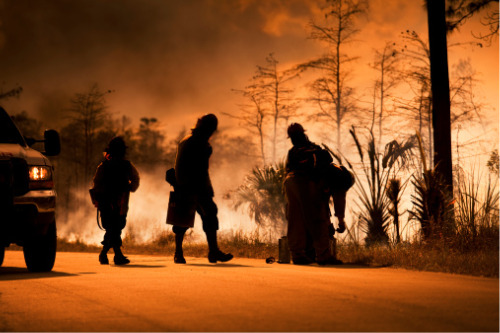

With the bushfire season coming to a close and the flames finally succumbing to the valiant efforts of firefighters,and a dose of torrential rain, it seems as if Australia is finally out of the crisis that has engulfed the nation since September 2019. But experts have warned that homeowners and communities living in the most bushfire-susceptible areas may now face rising costs as certain areas become insurance ‘red zones’.
So, what are these zones and what financial perils do they entail?
A red zone is where an insurer deems a property, and its location, uninsurable due to its history of threats - either by denying cover altogether or by raising annual premiums above 1% of the property’s value, which would be $10,000 a year for a $1 million home. With climate change becoming more prominent, the risk of places being classified as red zone areas increases. The number of red zones is only expected to rise further, leaving thousands of Australians stuck with financial hardship.
In an investigation by news.com.au, Dr Karl Mallon spoke to the news site to shed more light on the issue. Dr Mallon, director of science and systems at Climate Risk, said that as Australia gets hit by increased levels of extreme weather and catastrophes, the cost of premiums for people in at-risk locations also rises, meaning some might not be able to afford cover at all.
Dr Mallon was quoted as saying that his firm expected the number of properties in red zones to “at least double” moving forwards, due to the increased likelihood of extreme weather.
“A flooding event might have happened only once in 100 years, but with climate change that might become every 50 years, which means there’s a good chance it could happen during the life of your mortgage,” Dr Mallon said. “Insurance is not designed for something that is going to happen, it’s designed for something that’s not going to happen most of the time.”
A recent ‘cross dependency report’ by XDI, with analysis powered by Climate Risk Engines, highlighted the increasing number of properties that can be classified as being located in ‘high risk areas’. The potential for these high-risk areas becoming red zones is high.
Released in December 2019, the report concluded that there were 383,000 properties classified as high risk properties for climate related extreme weather events by 2020. This number is expected to increase to 735,000 in 2100 for existing properties alone. Thousands more will see their insurance premiums double or even triple within decades, the report suggested.
This idea paints a worrying picture, but there is a wide view that the industry will not let such red zones multiply across the country. Speaking to ABC soon after the publication of the report, Campbell Fuller, ICA head of communications, said that he did not envision this being a widespread occurrence.
“Claims that parts of Australia will become uninsurable or unaffordable are irresponsible,” he said. “No area of Australia should be uninsurable.”
Insurance Business reported last month on the effect of the bushfires on the industry, and A.M. Best noted that insurers “are no strangers” to natural catastrophes.
“The Australian insurance market is no stranger to catastrophe events, given that Australia is exposed to a wide range of natural perils, including flood, hail, cyclone, and earthquake,” A.M. Best said.
What is clear among the debate and analysis, however, is that climate change will not only continue to affect thousands of Australians, its impact will only rise over the coming years without further measures – both in the insurance space and the wider national sphere.
